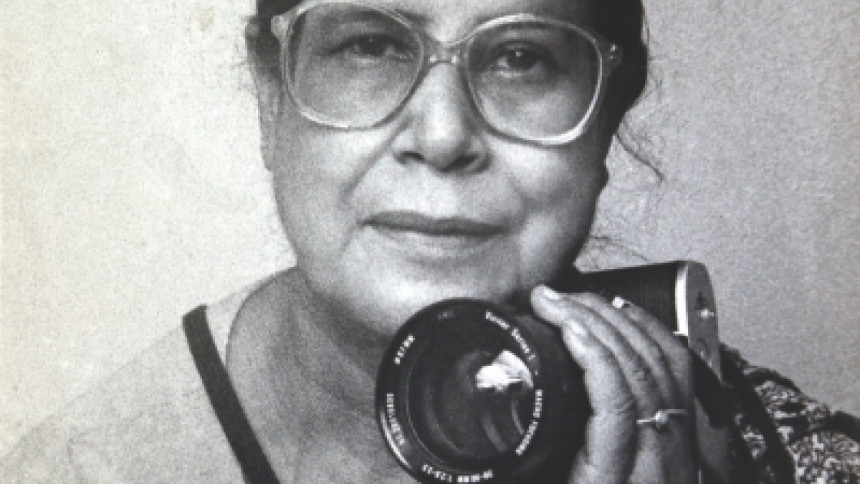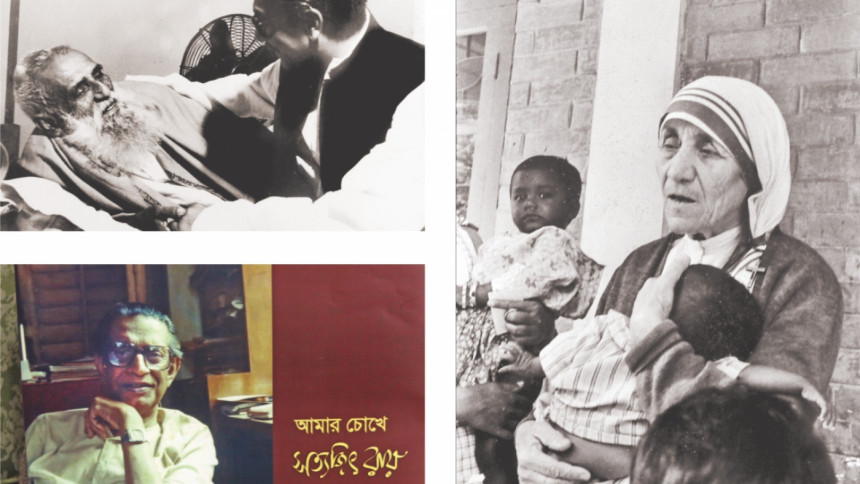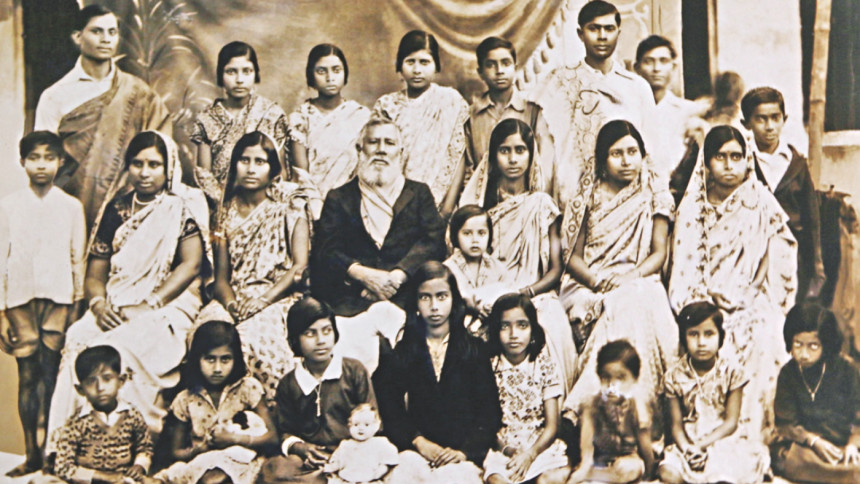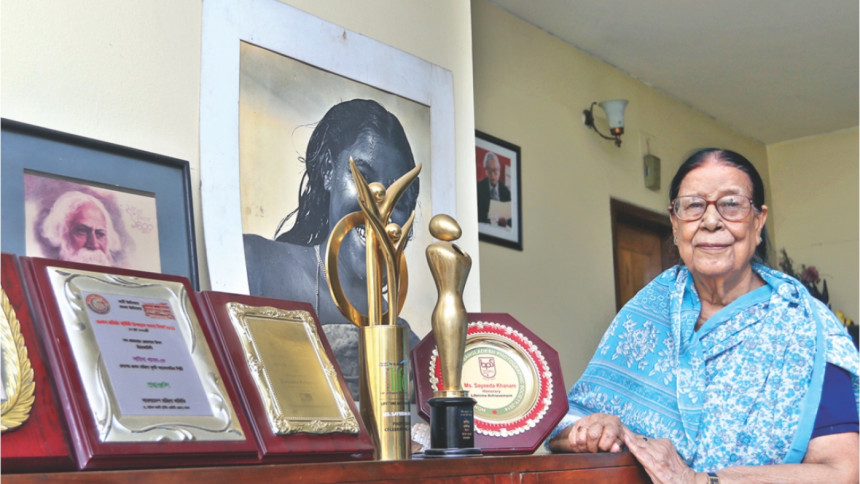The Girl With A Rolleicord

Photos: Courtesy
Imagine women entering the field of photography that has been historically dominated by men. That too during a time when women were confined to certain socially constructed roles.
To young people today, female photojournalists and photographers might not be an absurd, unimaginable concept. Thankfully, many women can now take up photography as their career without fearing backlash from the society at large. But this change was possible because a handful of women paved the way for future photographers to realise their passion.
79-year-old Sayeda Khanam, the first Bangladeshi woman professional photographer, is the trailblazer, who had the boldness to chart her own path and become an inspiration. She has been a beacon of hope for thousands of women who took courage from her story to break the shackles of society and follow their dreams.
Born on December 29, 1937, Sayeda Khanam's love for photography was instilled in her from the age of 12. "But who would trust a 12-year-old with a camera?" she laughs. Her first camera was a small Kodak box-camera, presented by Lutfunnessa Chowdhury, a close friend of Sayeda's elder sister, Hamida Khanam, founding principal of Dhaka's Home Economics College.
"If my older sister, Hamida Apa had not bought me a Rolleicord camera from the US, I would not have dared to dream of being a professional photographer back then," reminisces Sayeda. Thus began her quest for capturing that one perfect shot. She started her career as a photojournalist in the 60s with the periodical Begum, being a member of the prestigious magazine for over fifty years. As a freelance photographer, her main endeavour was to visit places in search for pictures - from Karachi and Darjeeling, to the studios of Kolkata and the streets of Dhaka, she traversed every road that would lead her to the perfect shot. In our world of filters and instant clicks, everyone can claim to be a photographer. For Sayeda and her counterparts, however, things were not quite as easy. "How many shots do you need for a perfect captures? For us, it always had to be just one perfect shot," she says.

Throughout her illustrious career, she bagged a number of national and international awards – she obtained the first position in the All Pakistan Photo Concept in 1960, the UNESCO Award in 1985, the Ananya Shirsho Dosh Award in Dhaka, among other. Her photographs have travelled different galleries around the world. And she had three solo exhibitions, exclusively focusing on Satyajit Ray and his life.
As a graduate (Masters) of Bangla Literature and Library Science from Dhaka University, Sayeda has also written a number of books, articles and literary pieces. However, Sayeda's distinctiveness lies more in her personality than her achievements. Those who converse with her understand what an amazing storyteller she is. As someone who had the rare opportunity to take pictures of Queen Elizabeth, Mother Teresa, Neil Armstrong, Edwin Aldrin, Michael Collins and Satyajit Ray, among many other famous personalities, Sayeda's treasure trove of stories never runs out, and one never gets tired of listening to them.
When Queen Elizabeth visited Dhaka in 1961, Sayeda was a photographer at Begum. She was very excited, but was concerned about the strict security protocol. However, her excitement on meeting the Queen of England could not be dampened, and she followed a series of formalities to gain permission to shoot pictures at the event. When the queen walked down the red carpet to attend the festivities commemorating her arrival, Sayeda was also there, clad in a blue saree, with two cameras hung around her neck.

"The moment she walked down the red carpet, cameras started flashing all around the queen. But my main camera refused to work. I started to get nervous, but I knew that I had to take the shot right away. So I grabbed the other camera which had a high speed film, took the picture without any flash and each of them turned out to be perfect."
One of the fascinating aspects of Sayeda's photography is that she used to take each picture as a personal project of her own, and put extra effort to establish a personal connection with the subject. Every time she returned after a photography spree, she would have a number of fascinating stories as well.

"When I met poet Kazi Nazrul Islam, he had already lost his speaking ability," she said, while unveiling yet another of her wonderful stories. "I found him tearing pages while his wife did household chores. I photographed him in his last days with his wife Pramila Devi by his side." Sayeda Khanam was also lucky to capture Zainul Abedin while he was working. She interviewed and photographed famous Indian poet and novelist Maitreyi Devi when she stayed at poet Sufia Kamal's house during her visit to Bangladesh.
"SM Parvez, Editor, cine magazine Chitrali had warned me about Satyajit Ray's frequent mood swings. But I visited the maestro in his house in Kolkata. I wholeheartedly believed that the director who could make Pather Panchali would not ignore someone who came all the way from Bangladesh to interview him," she says. And thus she became the first Bangladeshi to interview Ray – an interview that was published in 1962. Later on she had become a family friend. Her volume of works on Satyajit Ray enabled her to organise three solo exhibitions and write the popular book, Amar Chokhe Satyajit.

Even though her stories, undoubtedly, are enthralling and present an exciting glimpse into her life, her journey into photography was not an easy one.
"Except for a few, most of my contemporary male photographers did not like the fact that a woman worked alongside them," she says with a smile. Once I used the smiling face of a rural woman clad in a saree without a blouse (a luxury to most rural women back then) as a cover for Begum. I did not find anything offensive with that photo, neither did the editorial board of Begum, but there were protests held against me, in front of my house! Some fundamentalists believed that my photograph hurt the "precious purity" that they wanted to see in women," she says incredulously. But incidents like these, kept giving her courage instead of inciting fear and disappointment in her. Her commitment to pushing the boundary is visible in her eyes, even after all these years.
Sayeda also sheds light on the industry's gender disparity that she thought would change over time, but unfortunately hasn't. "Many female photographers considering photography as a viable profession, but photojournalism is not something that you do while sitting at your home or office. Despite having so many female photographers, women are very under-represented out in the field, especially once they are married."

What else upsets her? "The fact that I wasn't able to capture the Pakistani army's surrender," she says with a twinkle in her eyes. Despite being aware of possible risks, she was out on the street with her Rolleicord even then. However, the Pakistani army continued to fire for around half an hour, and thus, she had to alter her plans and escape to safety. That day, around 600 people died in the very area where she went to capture shots, and she too was very close to death. "My head throbbed and my ears rang, but how I wished I could take a picture of that moment," she says, regret evident in her voice.
Around 3,000 snapshots taken by Sayeda have had a lasting impact on our visual history. Her pictures need to be preserved and showcased for the up and coming photographers and history enthusiasts. This could be our way of saying thanks to this brave, incredible woman who never learnt to back down, even in the face of the harshest criticism and the most frightening backlashes.



 For all latest news, follow The Daily Star's Google News channel.
For all latest news, follow The Daily Star's Google News channel. 



Comments